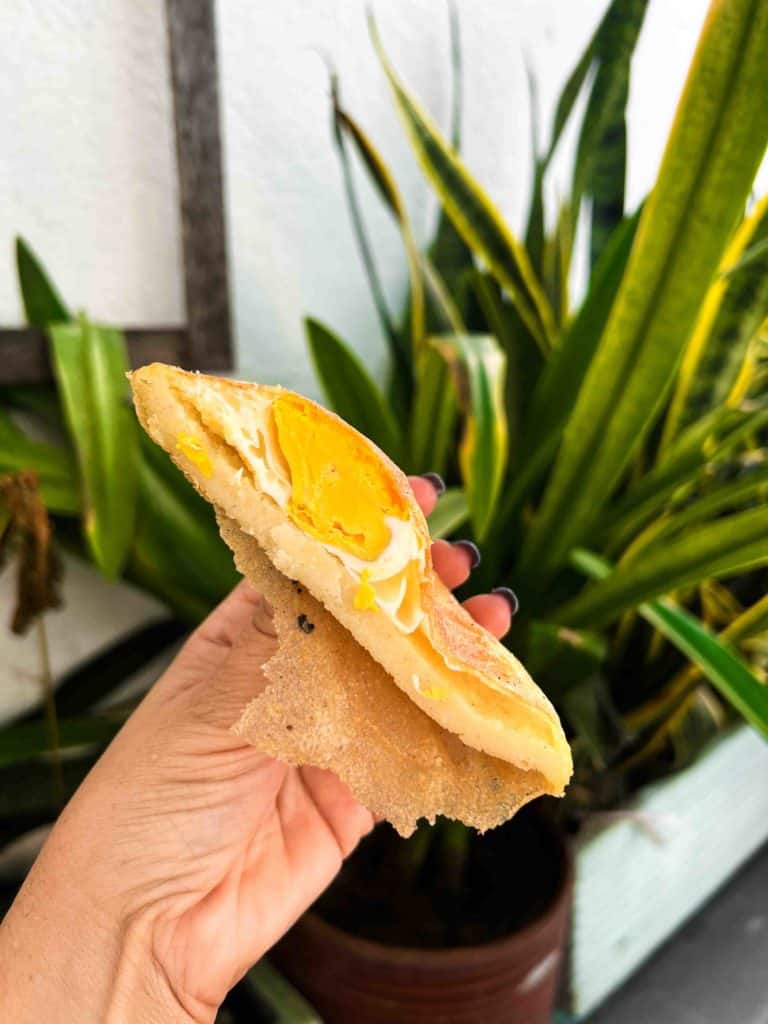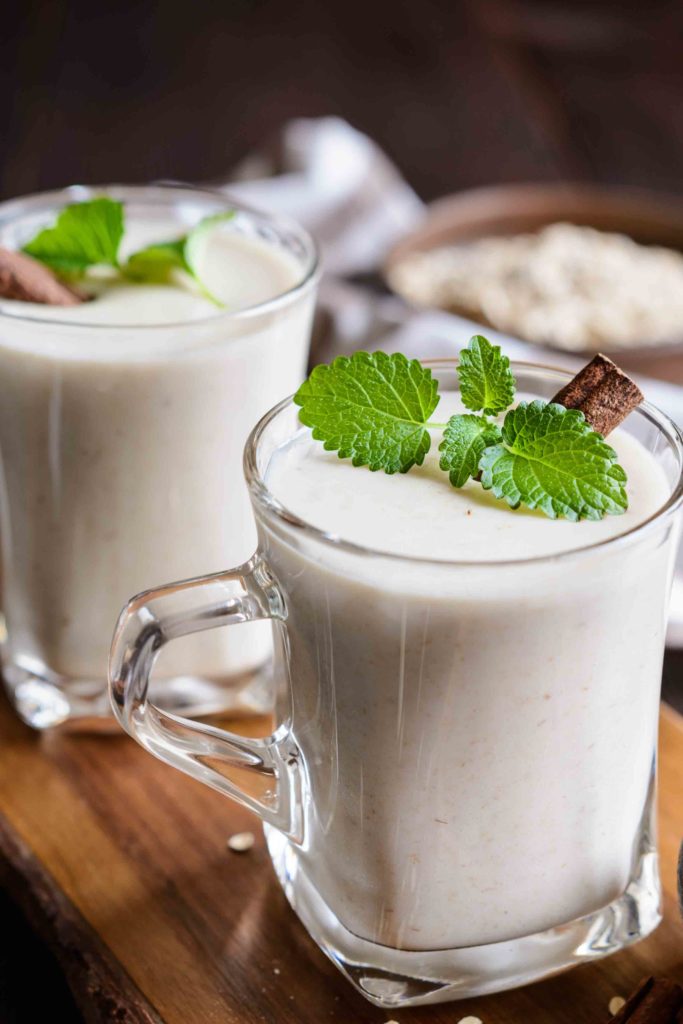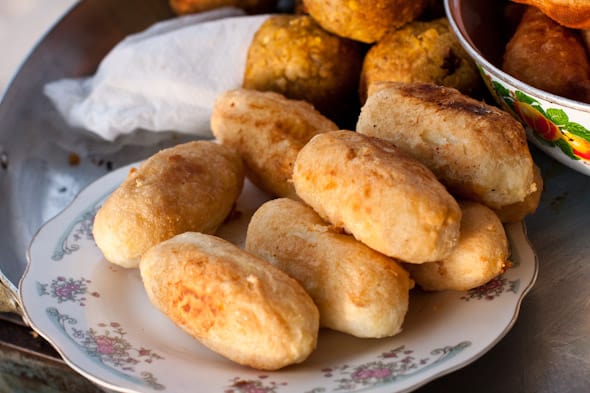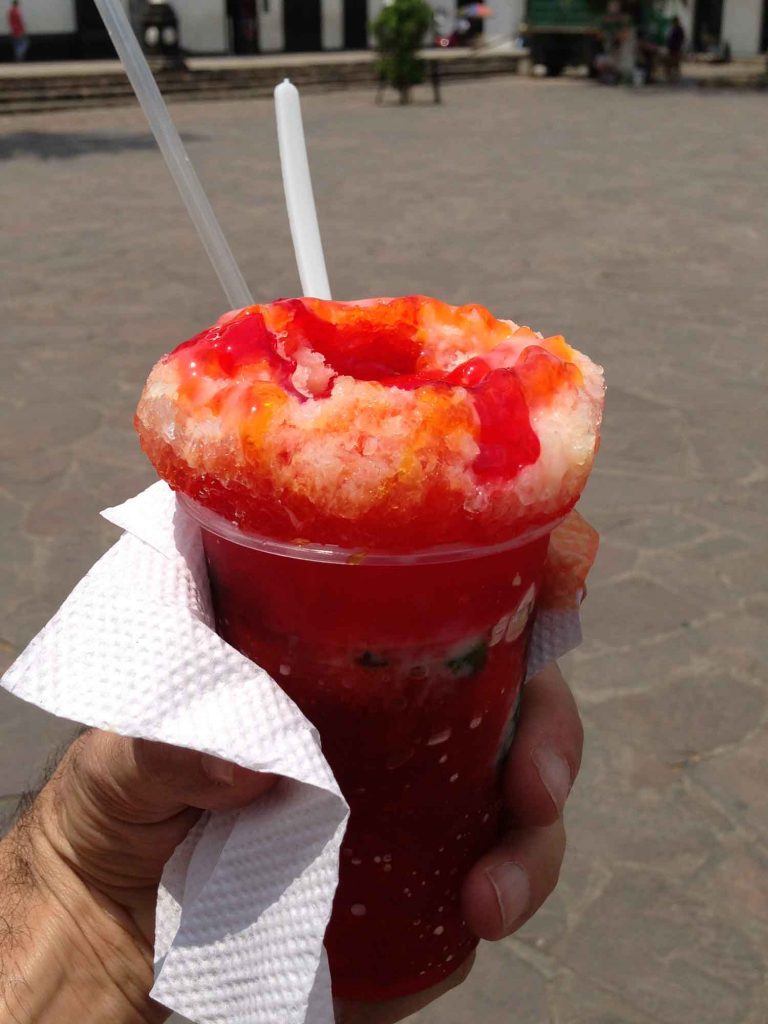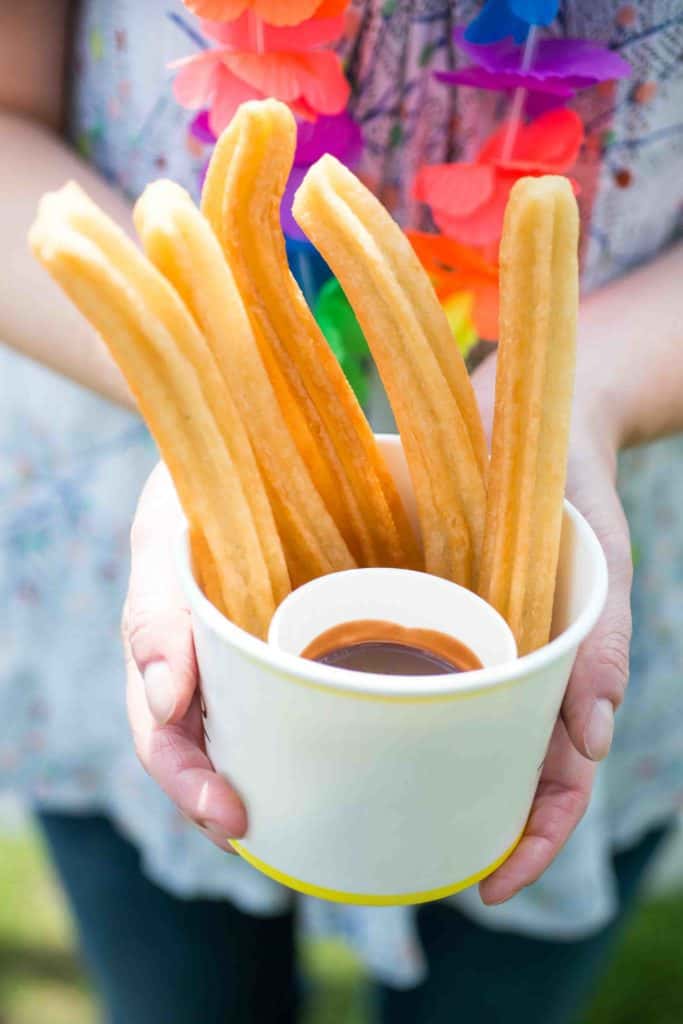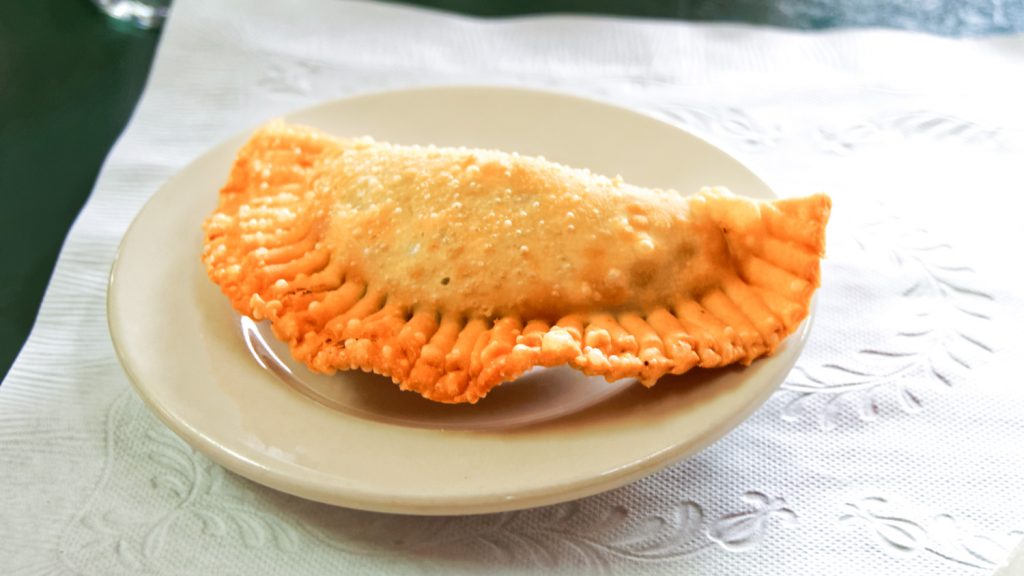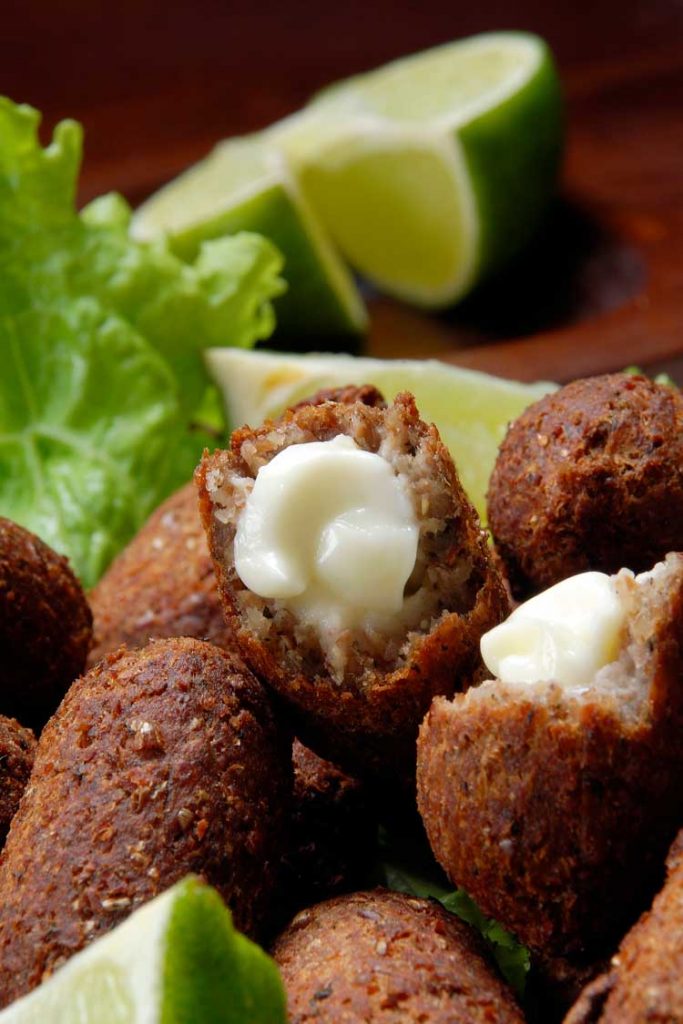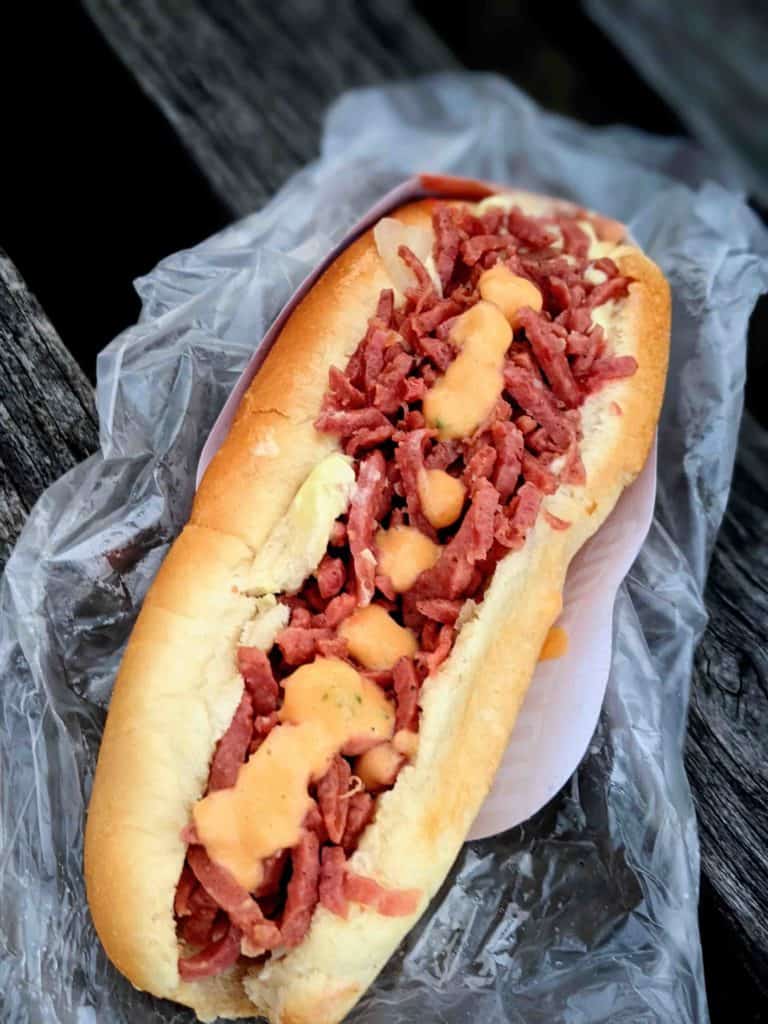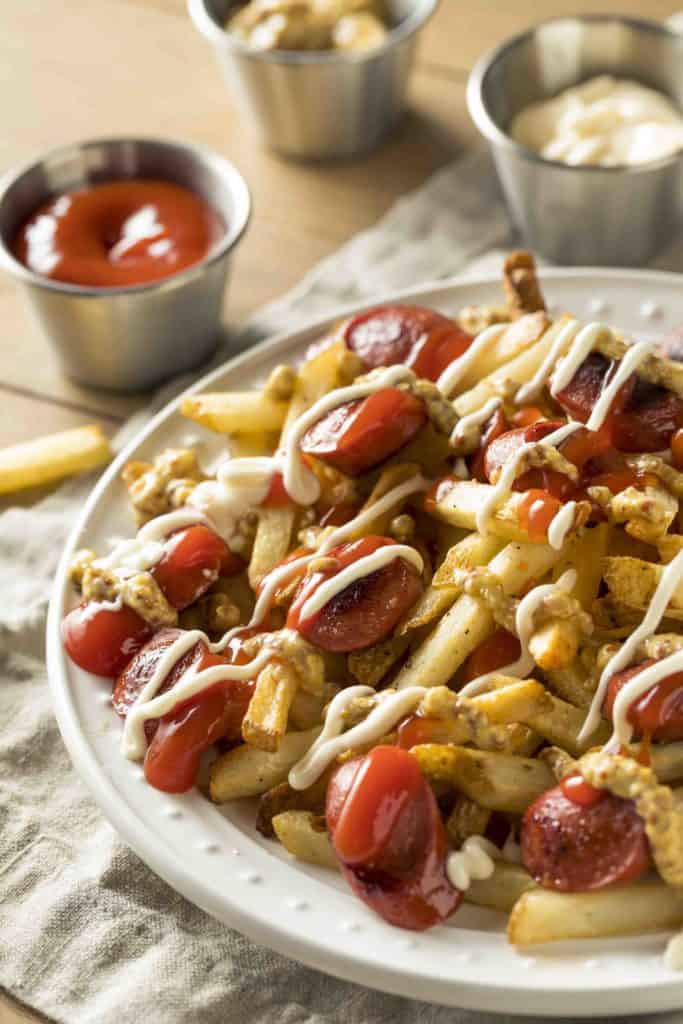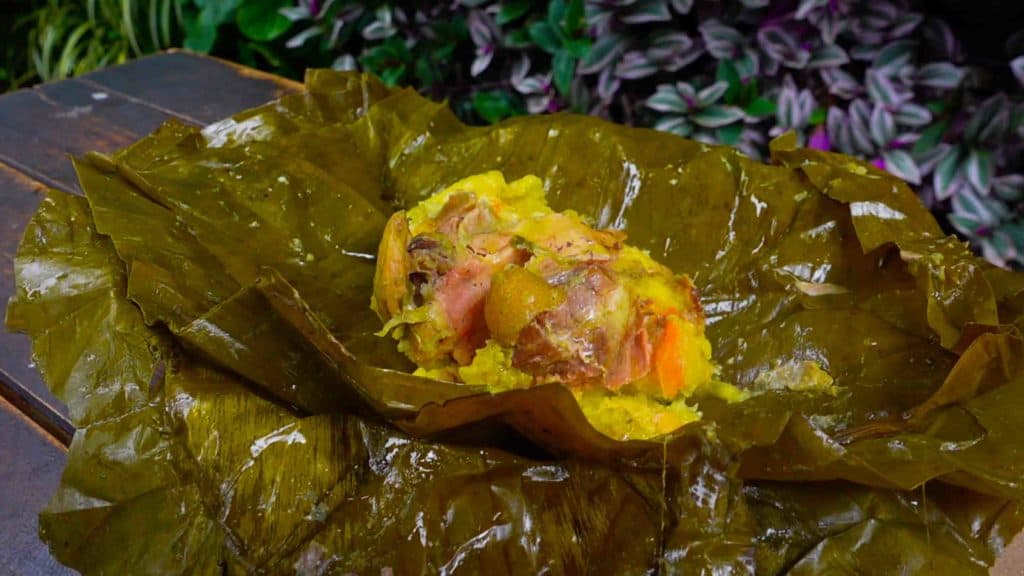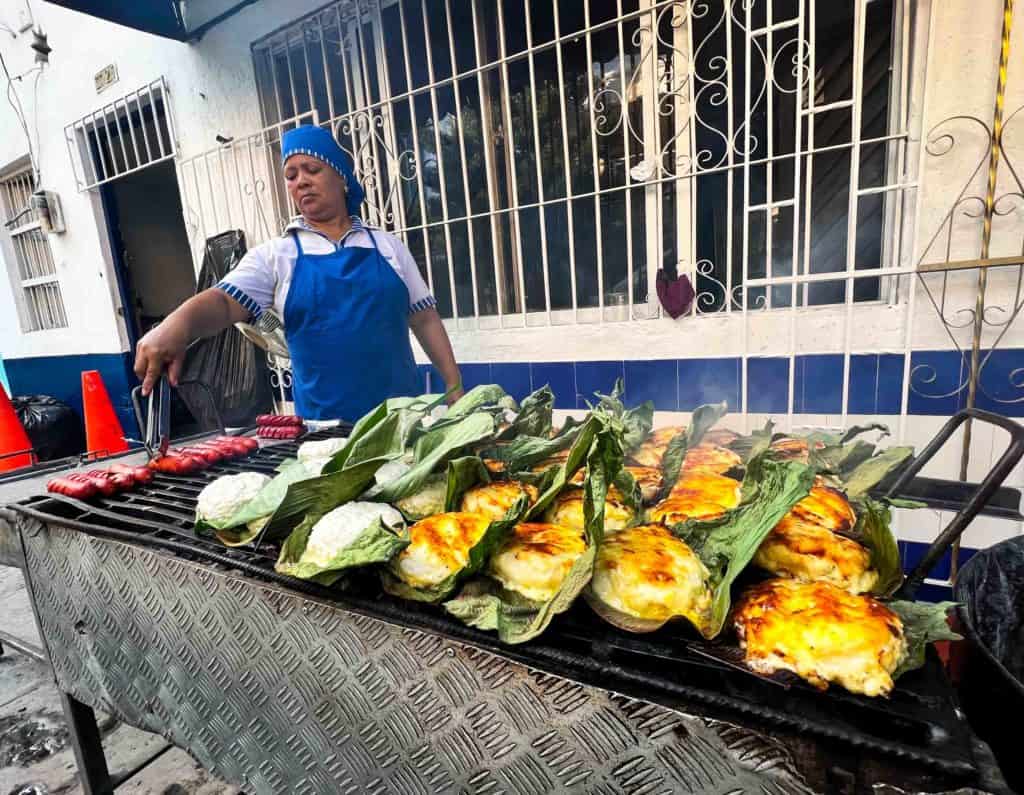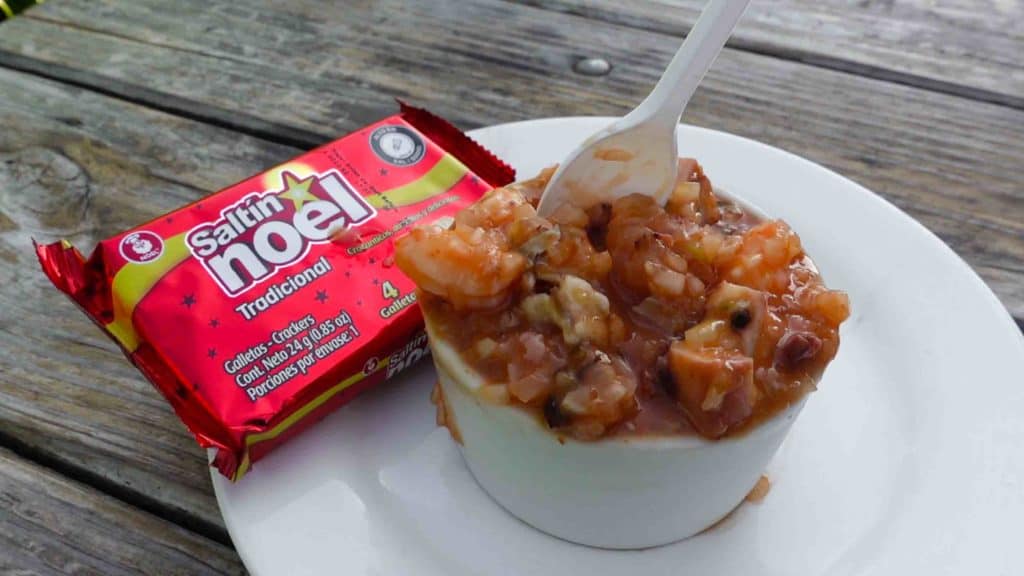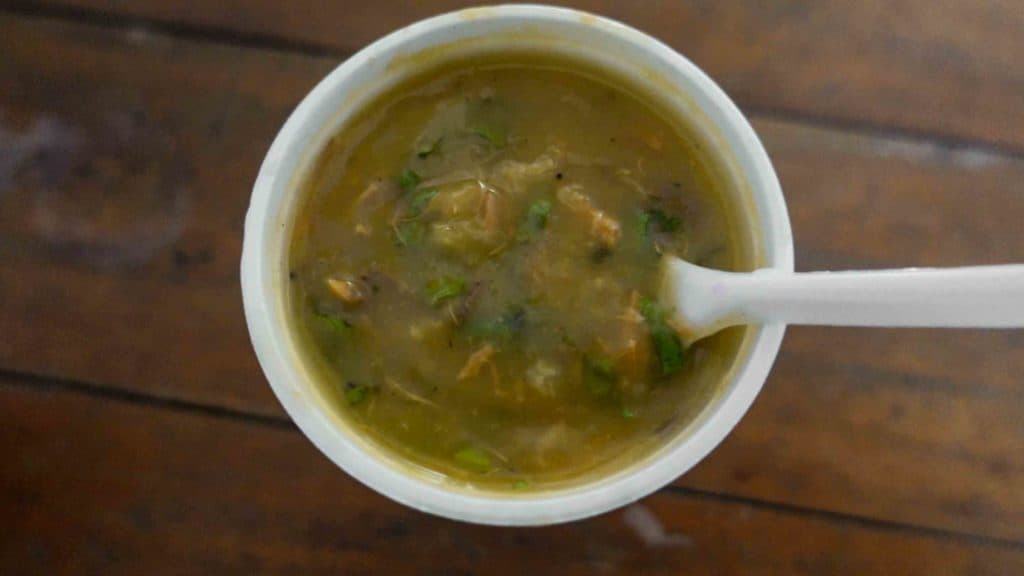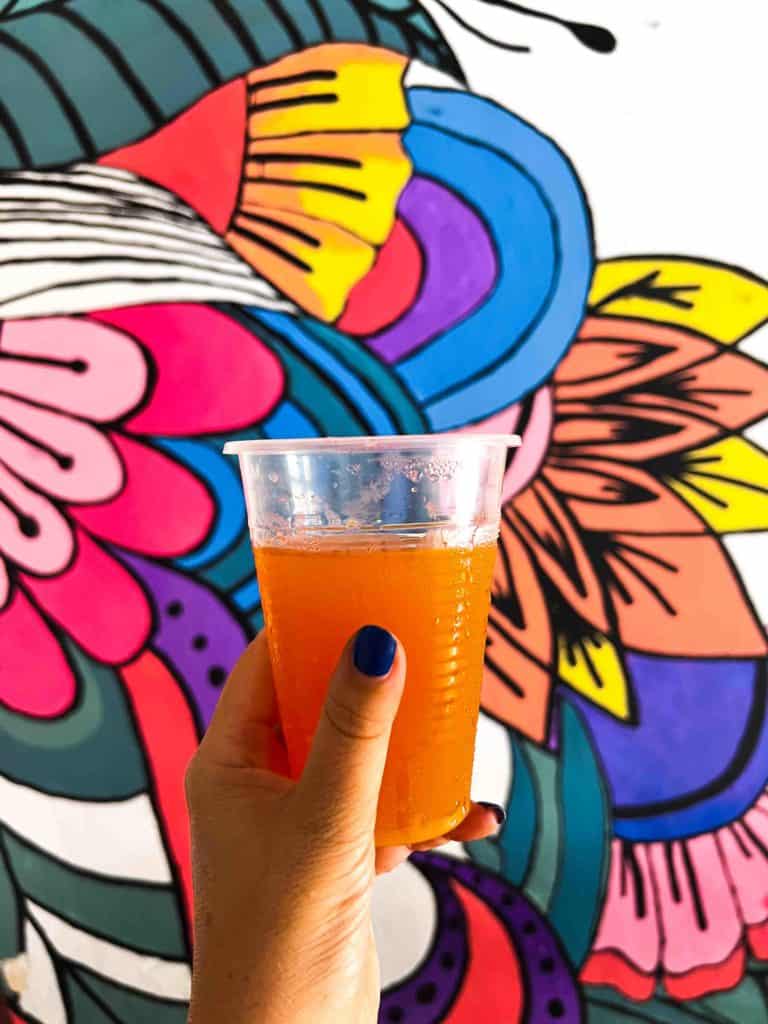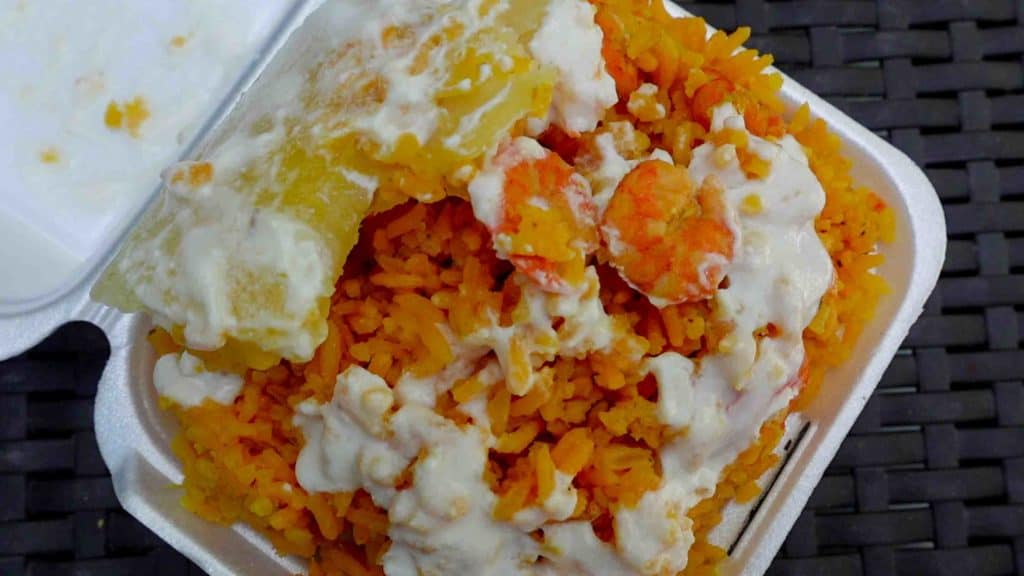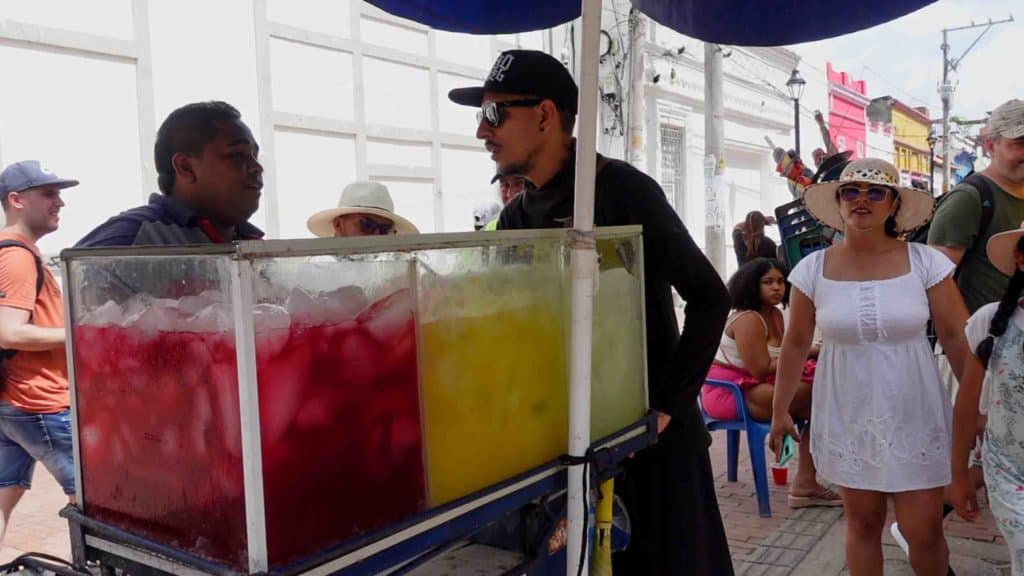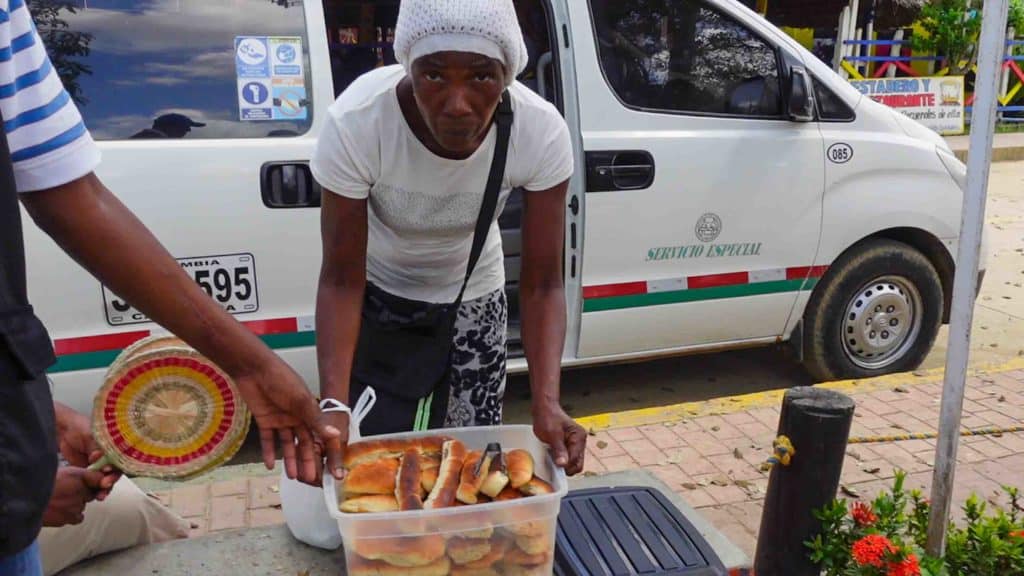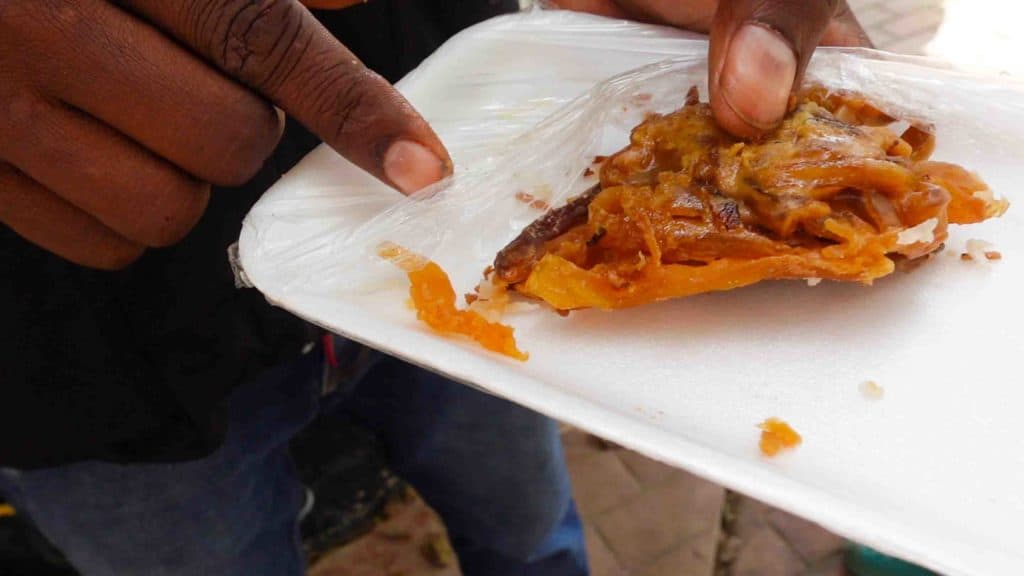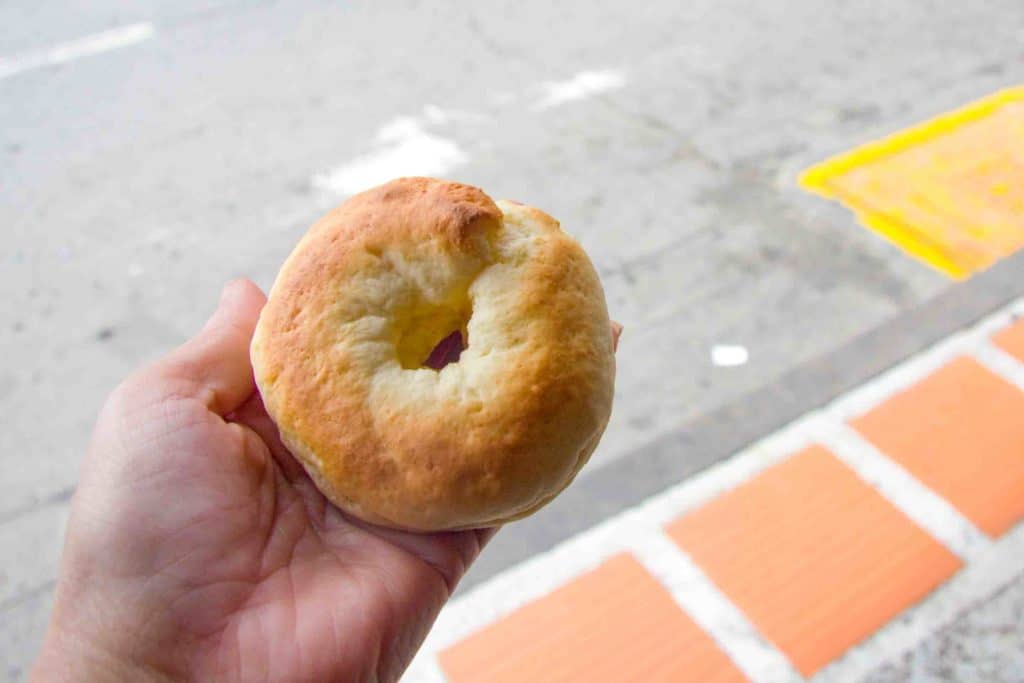Sweet, savory and at a great price, you’ll never forget Colombian street food.
Street food is a huge part of Colombian culture, and this is evident from the number of vendors around the country.
From metros and parks to side streets and intersections, you’re bound to find a street food vendor on almost every corner.
The best way to familiarize yourself with street food in Colombia is to sample all the goods.
Each day you are able to try a variety of new and delicious street food items that are bound to tantalize your tastebuds.
Traditional Colombian Food
What I love about Colombian street food is that it differs from region to region. This means that the same item will be prepared in a different way.
Take something as common as the arepa. The humble arepa is completely different at the coast compared to up in the mountain regions of the Andes.
Street food reflects culture, geography and history. It’s my favourite part of travel.
Many people are scared to try street food for the fear of getting sick. There is a perception that somehow it must be dirty because it is cheaper than restaurant food.
But I trust street food more than a restaurant because you can see how it is prepared. Vendors can’t afford to let ingredients sit, they make it fresh and serve until they’re out for the day.
If you’ve ever been to a restaurant’s walk in fridge you’ll see things that may scare you because they can’t always say the same.
Street food vendors take pride in the food they serve – they have a reputation to protect.
It’s a highly competitive market. So they must ensure that their products are good to keep people coming back for more.
So eat by the golden rule – where there are crowds of locals, and you’ll never be led astray.
Colombian Street Food
1. Arepas
Starting off the list are none other than arepas. Nothing quite says Colombian street food than the humble arepas.
They are made using a sweet cornmeal dough that is shaped and fried.
While the standard arepas that you find in fast-food outlets can be rather anemic looking and lack color and flavor, the street food counterparts are nothing alike.
They are thicker, darker in color, and full of flavor.
The other interesting fact about arepas is that they are highly regional and toppings differ between regions.
Take the arepa de queso, for example, hailing from Medellin – made from a base of corn flour and cheese mixed together.
It’s then fried and topped with quesito and condensed milk – the perfect mix of sweet and salty.
Another regional classic is the arepa de huevo, originating from Cartagena. It is made by filling a twice fried arepa dough with an egg cooked inside it.
2. Avena
Avena is a deliciously thick and creamy oatmeal-based drink found on the streets of Colombia.
It is made by boiling oats and water that is infused with cloves and cinnamon, and of course, a dash of sugar and salt.
While it is an easy drink to prepare, it packs a punch and delivers on flavor – deliciously rich and creamy.
Avena is also one of the most popular Ecuadorian drinks in the Andes and often known as “Quaker” as that’s the brand of oats first introduced into the country.
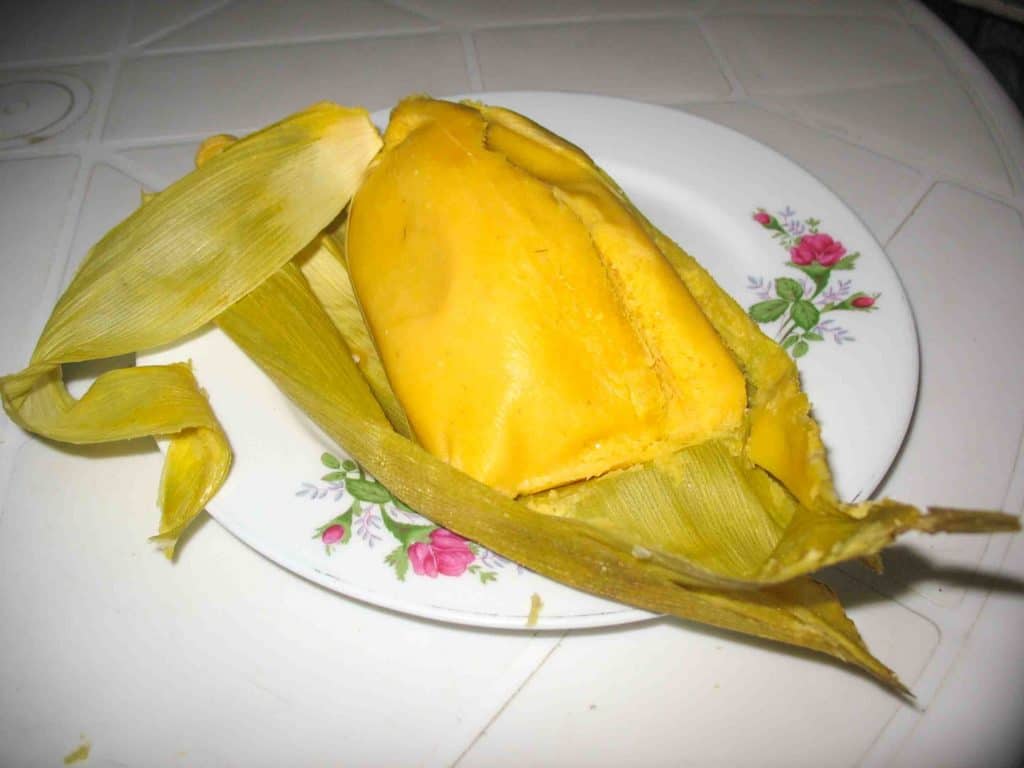
3. Bollo
Bollo are a type of boiled hominy corn roll that are wrapped with corn husks and then boiled.
They originate from the city of Barranquilla and are usually served with fried Colombian meats on the side such as chorizo, chicharron, and butifarras.
One of the most popular versions is called bollos de mazorca con queso and is simply a bollo served with cubes of fresh cheese.
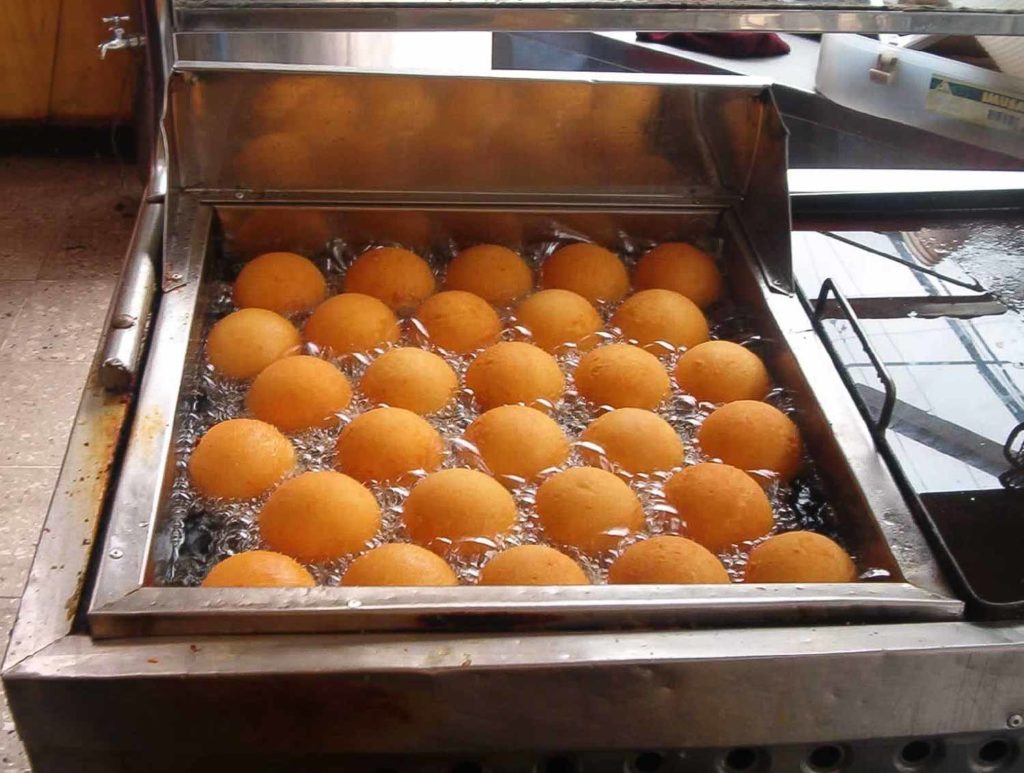
4. Buñuelos
Buñuelos are one of the most common Colombian street food items that are traditionally served around Christmas time.
They can also be enjoyed throughout the year and make for a great breakfast time snack.
Unlike other the Honduran desserts known as buñuelos in Latin America, they are not sweet and like doughnuts in Colombia.
These humble, golf ball-sized fritters are made using corn starch, cheese, and yuca flour.
They are traditionally served with chocolate sauce or the Colombian version of dulce de leche called arequipe.
Buñuelos are at their prime when served piping hot and are commonly served with a cup of coffee or hot chocolate alongside them.
5. Carimañola
Carimañola are a common street food in Colombia that you will find in the Caribbean region of the country.
They are small, elongated fritters made using yuca flour and are usually stuffed with meat or cheese.
While these are the most common carimañola stuffings, there are many variations that can be found, and families all have their own specific versions of the fritter.
While they are similar to empanadas, they use the mashed yuca instead of corn flour, making them softer in texture.
Colombian Desserts
6. Casabe
Casabe is a another one of the Colombian street food items that uses yuca flour as its base.
While this flatbread-type dish is found throughout South America, it was once a staple food item in Colombia.
Originally eaten by the Taino Indigenous people over 500 years ago it’s still available today but has evolved.
Today there are many variations of casabe that can be found throughout the country, but one of the most popular versions is called casaba con queso de capa.
This version uses a type of curdled cheese, similar to mozzarella, that is found in Mompos and nowhere else.
7. Cholado/ Raspado/ Raspao
A raspado is a type of Colombian snow cone or shaved ice dish. While cholados are just raspados that have been topped with fruit and sometimes, condensed milk.
This hybrid drink-frozen-cocktail-dessert originates from the El Valle region of Colombia and makes for an amazing summertime dessert.
While a variety of fruit can be used, some of the most popular choices are banana, pineapple, peach, blueberries, raspberries, and mango.
The fruit is place on top of the shaved ice and the cholado is finished off with blueberry syrup, shredded coconut, and a maraschino cherry.
Drinks in Colombia
8. Chinchulín
Chinchulín, also known as chunchullo, is a Colombian street food item that is bound to put off a few people – it is grilled/fried cow’s intestines.
The dish is incredibly popular amongst Colombians and is normally served with some lime and salt.
While many tourists might get put off by the dish, it is delicious. Trust me.
With a similar taste to liver, it will be most appealing to those who prefer the secondary cuts and organ meats.
It is definitely worth a try as long as you don’t overthink it too much and analyze what you’re eating.
9. Churros
Churros is a word that you have most likely heard in your life. While the namesake originates from Spain and Portugal, the Colombian street food version is a little different.
While the Spanish version is normally served with a side of chocolate dipping sauce, the Colombian street food version is usually served on its own, sprinkled with a dusting of sugar.
In Medellin, however, you will be able to find churros accompanied by a side dish of arequipe for dipping the churros into.
Colombian Slang
10. Coffee
Colombia is one of the top producers of coffee in the world – fact. However, the western coffee culture hasn’t seemed to have spread into Colombia.
Instead, Colombians enjoy a coffee on-the-go from street vendors, rather than an extended coffee and catch up at a local restaurant or café.
Locals refer to a small, slightly watery coffee, as a tintico (a little coffee).
You will find a tintico sold by streets vendors, mainly up in the Colombian highlands and mountainous Andes regions of the country and is great for an on-the-go warm up.
11. Empanadas
Empanadas are not a uniquely Colombian street food dish – they are found throughout Latin America and Spain.
Colombian empanadas, however, are made using corn flour and each region has its own specialty.
These corn fritter pockets are filled with a variety of ingredients including ground meat or shredded pork and beef and potato filling for a vegetarian option.
They make for a great snack and the perect street-side pick up for an on-the-go treat.
If you love empanadas you might want to check out this cheese empanadas recipe.
12. Fruit Cups
Salpicón is a deliciously refreshing Colombian fruit beverage. It is traditionally made up of fruit juice base topped with freshly chopped fruit such as strawberries, bananas, papaya, pineapple, watermelon, or oranges topped off with some soda water.
It is the perfect thirst-quencher on hot summers day and can be sipped with a straw and then the fruit is eaten with a spoon.
Colombian Fruit
13. Hormigas Culonas
Another one of the Colombian street food items that is definitely for the more experimental eater is hormigas culonas – directly translated to “big-assed ants”.
These leaf-cutter ants have been eaten by the Guane people for many years and are harvested during the rainy season in the Sandtander Department.
It is believed that only the female ants are used because of their larger abdomens, and they are usually given as wedding gifts. It is believed that the ants have aphrodisiac qualities.
Hormigas culonas are definitely one of the more unique Colombian street food items and have a somewhat nutty and chocolatey taste.
They are best fried or toasted, are highly nutritious, and are surprisingly delicious – Colombians enjoy them along with an ice-cold beer.
14. Kibbeh
While kibbeh is actually a traditional middle eastern dish, it is also popular throughout Latin America.
During the 19th and 20th centuries, the was a large Levant immigrant population in Latin America and with them, came their traditional cuisine.
The kibbeh dish is made using ground beef, onions, and a grain (usually bulgur wheat) spiced with a combination of sumac, allspice and cumin.
They are then shaped and deep fried until golden brown and are enjoyed as a delicious snack on-the-go.
They are also a popular Mexican antojito snack known as kibis.
15. Lechon
Pork is one of the most commonly enjoyed meats in Colombia and Lechon is one of the much-loved delicacies.
Lechon is a slow-cooked suckling pig that is roasted over the coals until it is crispy on the outside, tender on the inside, and bursting with flavor.
The pork fatback is often stuffed with rice, peas, and spices before being cooked.
It is sold by street vendors in Colombia, served with arepas or tamales – and of course aji hot sauce.
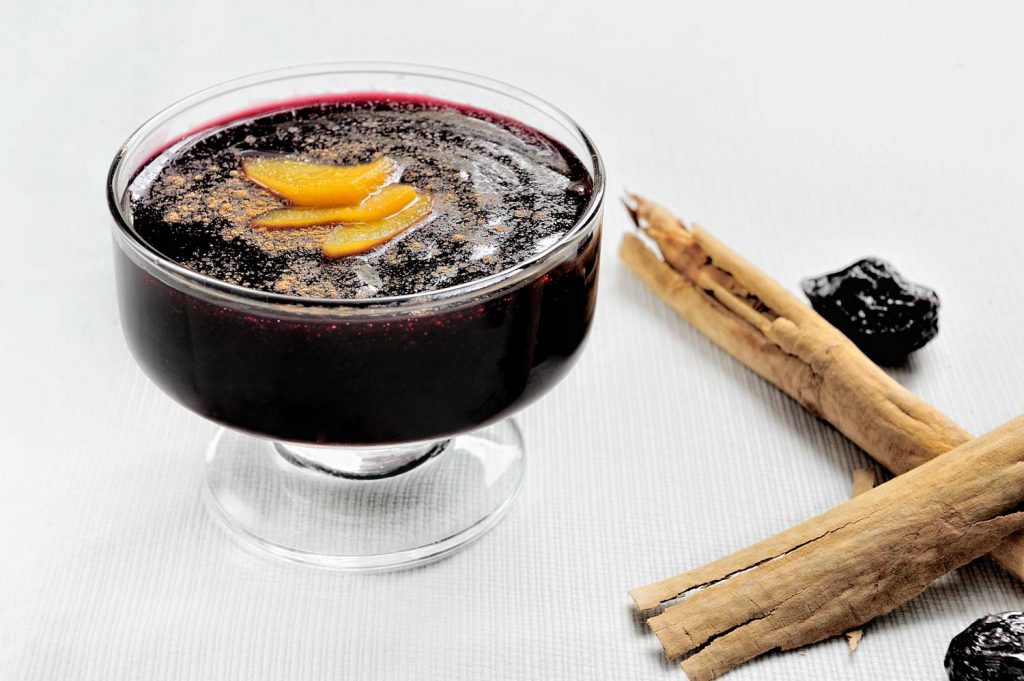
16. Mazamorra
Mazamorra is a popular street food dish in Colombia made with dried, cracked corn and water.
The mazamorra Antiqueña is served with milk and either panela (brown cane sugar) or bocadillo (a guava paste).
While there are many different variations of the dish throughout Colombia and the rest of Latin America, the version above from the Antioquia department of Colombia is a winner.
Colombians enjoy mazamorra as a dessert and many cannot resist the sweet treat.
17. Obleas
Obleas are another one of the sweet Colombian street food treats – a large, round wafer.
Traditionally, obleas are served with the Colombian dulce de leche arequipe, but can also be topped with jams, cheese, and chocolate sprinkles.
While obleas are enjoyed throughout Colombia, they can also be found in other Latin American countries like El Salvador, Mexico, and Venezuela.
The obleas carts can be found in the streets with big wafers stacked together and their arrays of jars containing the accompaniments.
18. Papa Rellena
Moving away from the sweet treats for a bit, the next Colombian street food dish is papa rellena.
They are made using none other than the humble potato that is formed into balls and stuffed with spices, meat, and vegetables.
Colombians eat papa rellena as a snack on the go or as a breakfast dish and they can be served either hot or cold.
It’s like a big fried potato ball, crispy on the outside and soft on the inside.
They are usually served with traditional aji for some added heat to the dish.
Colombian Breakfast Foods
19. Pan de Yuca
Pan de yuca is a traditional Colombian bread that is made using a base of yuca flour and cheese.
This incredibly versatile dish can be served at any time of the day as a snack and is a common Colombian breakfast item.
It is almost always served with a hot beverage like coffee or hot chocolate.
20. Perro Caliente
Everyone loves a good hot dog – and the Colombians are no different.
In Medellin, for instance, the stets are littered with hot dog vendors serving up some of the most delicious street food item known.
Traditionally, they boil the sausages, place them on a freshly baked hot dog roll, and top it off with mustard, ketchup, coleslaw, mayonnaise, or pineapple.
Perro caliente also make for a great late night snack when you’re out partying and are in need of some sustenance.
21. Picadas
Picadas are essentially platters that are made up of a variety of different components.
These include different types of meats and vegetables together on the same board.
They are generally served on Sundays when friends and family come together as well as special occasions and events.
Picadas are also found being sold be by street food vendors throughout the country that all have their own combination of items on the board.
You will usually find a meat such as chicken, pork, or beef along with guacamole, chunchullo, envuelto, and sweet plantains.
22. Salchipapas
Salchipapas has its roots in Lima in Peru, but it is also found throughout South America as a popular street food dish.
Two words are combined here – salchi which is sausage and papas which are potatoes.
Therefore, salchipapas is a dish made up of sausages and French fries.
There are many combinations of elements that go along with the dish and other items include bacon, cheese and so many sauces
While salchipapas are found on most kid’s food menus in restaurants throughout the country, the adults are also huge fans of this simple Colombian street food snack.
Salchipapas are also one of the most popular Peruvian snacks.
23. Tamales
An ever-popular street food dish found throughout South and Central America as well as Mexico, and of course, Colombia.
They are a simple preparation of corn flour dough that is filed with cheese, meat, or vegetables and then steamed.
While many other countries steam the tamales in banana leaves, the Colombians often also use corn husks
Again, there are so many variations of this Colombian street food dish but one of the notable variations hails from the Tolima Department.
They are called Tamales tolimenses and are filled with a variety of ingredients.
You’ll find chicken and pork ribs combined with vegetables like carrots and potatoes and even things like rice and eggs.
The people of Bogota enjoy serving the tamales tolimenses with a regional specialty called chocolate santafereño .
Now chocolate santafereño is not just any hot chocolate – it’s hot chocolate taken to the next level. A small metal pot called a chocoletera or an olleta is used to melt chocolate and then whipped up.
Queso fresco is then added which gives the hot chocolate a somewhat umami and salty pop.
24. Arepas Rellena
Once you eat a cheese stuffed arepa you’ll never been content with a plain ole grilled cheese sandwich.
In Santa Marta has a famous version of these, the masa (cooked corn meal) is stuffed to the brim with cheese.
It is devastatingly good.
At 4pm people line up at Arepas Yiya. You can’t miss the spot in Central Santa Marta as they cook them outsite and you can smell them a block away.
An arepa and agua de maiz, corn water made from the liquid leftover from cooking the corn used for the masa, is only 7000 Colombian pesos.
The corn water sounds odd but is definitely worth trying.
25. Ceviche
In Colombia they often use a tomato sauce and may include ketchup or mayonnaise.
And in many cases on the beach the seafood is cooked beforehand so that it’s safe to eat and feels a bit more like a seafood cocktail. It’s similar to shrimp ceviche in Ecuador but not quite the same.
Peruvian Ceviche
Peruvians are fiercely proud of their cuisine and say the only ceviche worth eating is in Perú. But the method of preparing fish without heat is found throughout the world.
I also love the kinilaw recipe in the Philippines and kokoda in Fiji.
So I think it’s best not to compare ceviches throughout Latin America. It’s the same name but different preparation.
26. Cazuela de Mariscos
In Santa Marta locals call one of the church plazas sopas de la parque. Here you’ll find vendors selling fish or seafood stews along with seafood and fish rice.
Vendors are from San Andres Island and rotate who is there each day. But you really can’t go wrong with any of them.
But go early in the day before the sell out and bring a hat as the plaza can get really hot.
27. Panela Con Limon
If you’ve been to the market or even the grocery store and have been puzzled by the big blocks of what appears to be brown sugar that is panela.
Panela is unprocessed sugar cane and is used throughout Colombian cuisine and especially in baking and drinks.
Panela con limon is a simple but refreshing drink similar to lemonade and available on the street for less than a dollar.
28. Arroz Con Camarones
Alongside the cazuela at sopas de la parque you’ll both seafood rice and shrimp rice. I prefer the shrimp as I don’t love conch as it can overpower a seafood mix.
This is a bargain as it’s also served with yuca and make sure you get the suero on top.
29. Fruit Juice
Fresh fruit juice is a part of everyday life in Colombia, particularly along the coast. You’ll find vendors along every corner with a number of seasonal fruits.
One you don’t want to miss is corozo, which is a Colombian fruit unique to the coast. Colombians love it so if you see a vendor selling reddish juice in a fruit tank you’re likely to be drinking it.
Some people liken it to a plum or blueberry. Colombians make juice and preserves and if you’re lucky, wine.
But it’s an endangered fruit so I like to think that by buying the drink we are encouraging people to plant more.
And if you are wary of these fish tank drinks don’t worry! They use filtered water as Colombians outside Bogota don’t drink tap water either.
30. Pan de Coco
I think calling it Colombian coconut bread does it a disservice because it’s so delicious. While some versions are almost like a soft roll, along the coast it is a hardier bread with grated coconut inside.
Try both and see which one you like better.
31. Caballitos
Green papaya cooked down with sugar and cinnamon, this is a sweet treat you’ll find along the Colombian coast.
I tried it in Palengue, the first “free town” for Afro Colombian slaves. It is worth visiting this town as a day trip from Colombian and don’t iss the food because it’s delicious.
32. Pandebono
One of the simplest street food snacks, pan de bono is common at breakfast but you’ll find lots of shops selling it throughout the day.
Pandebono is made with yuca flour, cheese and egg. Although it’s most famous in Cali Colombia and the Valle del Cauca region it’s now a popular street food throughout Colombia.
But you’ll find pan de bono throughout Colombia in various shapes. Some prefer the bagel style and others the balls which are chewy and soft in the middle.
If you’re eating Colombian street food and it’s delicious, post it on Instagram and tag me @Ayngelina so I can share it!
